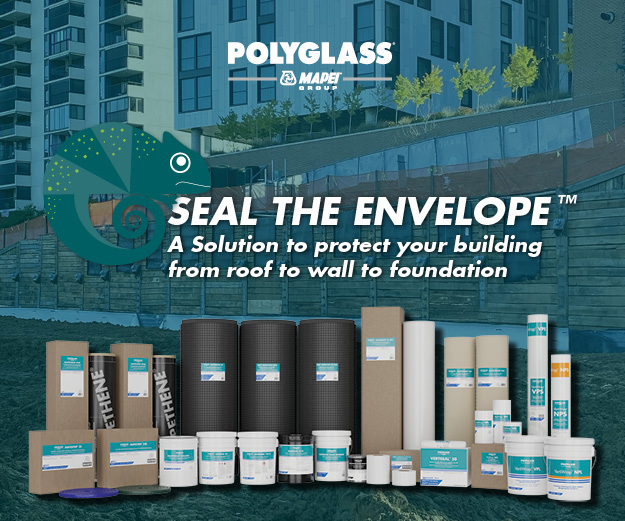OSHA Regs Affect Basements
In October, the U.S. Occupational Safety and Health Administration (OSHA) extended their confined space regulations to apply to basements, crawlspaces, and attics.
Regina McMichael, who trains contractors how to comply with the new rules calls the Confined Space regulation “confusing at best and overwhelming at worst,” and notes “this regulation has the potential to impact a huge portion of the industry.”
Whether it’s new construction, remodeling, or home performance improvement, workers entering attics, basements, crawl spaces and man-holes must evaluate these spaces for hazards and make them safe according to OSHA standards prior to entry. In some cases, contractors will need to file permits, instate written programs, and undergo specialized training to ensure they meet these requirements.
To address these concerns, training classes are being offered at the IBS and World of Concrete trade shows. The IBS event is a 60-minute class taught by McMichael on Wednesday, Jan 20th beginning at 10 am. McMichael says, “ If you are not sure how, or even if, this new rule affects you, join us for this info-packed session that explains the regulation and shares best practices for being compliant.”
The Basement Health Association has sponsored a more comprehensive class at World of Concrete. Presented by an OSHA-certified trainer, the four-hour course begins Monday, February 1 at noon. Tuition is $110 for BHA members; $185 for nonmembers.
Construction Rises in 2015
Year-end statistics for 2015 indicate that both residential and commercial construction continue to recover steadily, although they have not yet reached pre-2008 levels.
The U.S. Dept. of Commerce reports that single-family home starts will end the year at about 700,000. That’s lower than most estimates, but still better than any year since 2008.
“Housing is still really in a slow grind higher, [but] at the very least it’s stable,” said Gennadiy Goldberg, an analyst at TD Securities LLC in New York. “Ongoing strength in permits is really a hint that you are going to get more construction.”
Conditions are expected to improve further in 2016, with Dodge Analytics expecting and increase of 17%, and the National Association of Home Builders (NAHB) predicting a 27% increase. NAHB chief economist David Crowe states, “If people can get good jobs that pay decent incomes, the housing market will continue to move forward.”
Commercial building in 2015 is up a more modest 6%, varying slightly by sector: office construction was up only 4%, school and institutional building rose 8%.
Green Roof Transforms Blight into Park
In New York City, an ambitious and highly acclaimed urban reclamation project has transformed an abandoned elevated railway into one of the city’s most popular parks.
Suspended more than 30 feet in the air and running uninterrupted through 23 city blocks of downtown Manhattan, the High Line offers expansive views of New York City and the Hudson River. The train line was built during the Great Depression to relieve traffic congestion, but by the 1980s had fallen into disuse and was shuttered.
The non-profit group “Friends of the High Line” lobbied to preserve the structure, and commissioned a study that found it would be economically viable to turn the abandoned space into a park. That task fell to the landscape architecture firm of James Corner Field Operations and architects Diller Scofidio + Renfro. ZinCo USA provided the technical basis for all the green roof design concepts in terms of plants, walkways, and leisure areas, using Floradrain for water management and ZinCo’s blend M growing medium.
The project was completed in three phases, with the final phase wrapping up in late 2014.
At a total of 1.45 miles the High Line is considered the “longest greenroof” in the world to date. It’s also one of the most expensive parks ever constructed, but has already become one of Manhattan’s most popular destinations with more than 5 million visitors per year.
From an overgrown abandoned railroad trestle to a delightful changing panorama with re-introduced indigenous vegetation, original and restored rails, and contemporary artwork mixed with a wide variety of places for relaxation and enjoyment, the iconic High Line is a remarkable landscaped city park in the air.
Koster Expands Distribution Network
In September, Koster America announced a new distribution agreement with Water Mitigation Concepts (WMC). WMC has represented Koster in the San Diego market for some time, and are now exclusive distributors of their products in the Los Angeles region as well.
These include their epoxy coating line that effectively controls vapor transmission in concrete floor slabs, Koster’s urethane cement flooring, and a full line of concrete waterproofing solutions.
Survey Confirms Polyurethane Growth
The Center for the Polyurethanes Industry (CPI) released a survey, two years in the making, confirming the growth of the polyurethanes industry in the United States, Canada and Mexico.
The report shows that polyurethane production rose in all product segments between 2012 and 2014, with the most significant increase taking place for rigid foam applications. The waterproofing and coating industry also showed a significant increase in polyurethane demand.
Combined polyurethane production for the United States, Canada and Mexico increased from about 6.92 million pounds in 2012 to 7.65 million pounds by the end of 2014.
Liquid Flashing Achieves 10-year Performance
A liquid flashing membrane from Prosoco has been independently verified to remain waterproof over a 10-year span.
In 2005, FastFlash was used on the Renaissance Condominiums in Seattle in a whole-structure remediation project.
In February 2015, the product was verified to be performing as intended by OAC Services, a building enclosure consulting firm. The report from OAC Services states, “We found no adverse conditions related to the use of this product to any of the materials observed. All surfaces were dry and in good condition. We found no degradation of the FastFlash product used within the assembly.”
In order to thoroughly review the building, OAC removed the siding and windows from a unit on the southwest corner of the building to inspect the wall sheathing and rough opening. An opening was also made on the interior of the building below the window to observe the condition of the wall cavity.
Dave Pennington, building envelope group manager for Prosoco says this achievement is a first for a fluid-applied flashing material, and that the milestone has been long-awaited by the industry. “FastFlash… can show 10-year historical performance data,” he states. “This provides confidence to applicators and specifiers.”
New Approval for Elastomeric Roof
In November, the National Coatings Corporation (NCC) announced that its line of AcryShield roof coatings exceeded windstorm and hail resistance standards.
These new ratings were prepared and tested by FM Approvals as a system, using various AcryShield base and top coats. The report concluded the AcryShield roofing system could withstand a Class 1-990 wind uplift test and had the ability to resist severe hail damage according to Class 1-SH testing when applied over structural concrete decks.
For contractors and architects who design for extreme wind, such as in coastal communities, hi-rises, and lakefront properties, as well as areas that experience damaging hailstorms, these new approvals should give them peace of mind.
Shawn J. Collins, president of NCC, says, “The long-term performance capabilities and superior protection the coatings provide the rooftop during severe wind or hail, allow the roof to last longer and perform greater than traditional roofing options.”













